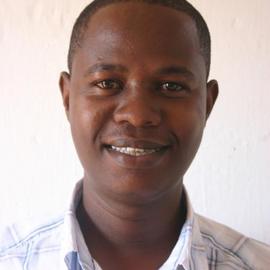Joseph Mwakima is a One Young World delegate from Kenya. He was a delegate speaker in the Sustainable Development Plenary Session at the Dublin Summit 2014.
In the Tsavo Conservation area of Kenya, communities face many problems on a daily basis; most of which are intensified by climate change. For the average family, drought means women and children regularly walk over ten kilometers to find water. Education is poor and too expensive, unemployment is desperately high, and people suffer from food insecurity. The crops that do survive the extreme drought and poor soil quality are often destroyed by wildlife.
These problems are not unique to the communities in Tsavo. Across Kenya, it is estimated that over one million people are living on food aid; while floods caused by climate change in other areas have displaced approximately 140,000 people in last year.
These issues are not solely isolated to African nations. Did you know that 60% of California is now facing “exceptional drought”, or that large parts of the state live on bottled water? The wildfires that rage through Californian communities are a reminder that climate change is affecting the entire planet.
[[[image-1 large]]]
I am a twenty-seven year old Kenyan working within the Tsavo community for Wildlife Works. Wildlife Works is implementing a forest protection program called ‘Reducing Emissions from Deforestation and Forest Degradation’(REDD+); a UN-envisioned climate change mitigation strategy based on carbon financing. Forests are essential to human health and livelihoods by cleaning the air we breathe, providing the water we drink, and producing the food we eat. An estimated one billion people worldwide depend on forests for their livelihoods; often contributing up to 20% of their overall income. In addition, our forests are also home to countless species of vital plants and animals, but we carelessly continue to burn them.
Tropical forests are destroyed at a rate of thirty-six football fields per minute, and deforestation is now the second largest source of climate-changing greenhouse gas emissions; next to burning fossil fuels. The burning of these forests in Kenya for charcoal and subsistence farming affects weather around the world; after all, there are no country borders in the earth’s atmosphere.
By conserving nearly 500,000 acres of dryland forest at the Wildlife Works Kasigau Corridor REDD+ project, we generate Verified Emission Reductions (VERs); also known as carbon credits or offsets. These credits are sold to individuals and companies, like Barclays Bank, Microsoft, and Kering, who purchase them to voluntarily offset their unavoidable emissions. When a customer purchases Verified Emission Reductions from our project, they are helping to protect forests whilst providing community benefits through local community projects.
The revenue from offsetting is shared with landowners and the local community; providing them with alternative livelihoods to deforestation. To date, carbon revenues have helped to pay for over 2,500 students to attend secondary school and university, funded the implementation of 6 water projects and water catchments, and built 18 school rooms. Employment creation is our key conservation strategy and we currently provide 350 jobs to local men and women through operating green sustainable industries. These include jobs in our organic greenhouses and our eco-clothing factory - which makes clothes for Puma, Threads for Thought and Lalesso.
Education is essential. My role at Wildlife Works is to educate and create awareness amongst our community about environmental conservation and the important links between deforestation and climate change. Our project lasts thirty years; so we encourage the community to protect their own forest for their own benefit. We have created different styles and methods to communicate with people on what role they can play in mitigating climate change.
It is important to adapt your message according to your audience. For example; many people cannot read or write in our community, so we organize film viewings and informal open-air meetings. A lot of time is spent interacting with the youth through theater plays and workshops in the local schools. One of the best ways we educate the youth is through sport We organize regular soccer tournaments and have conservation related discussions before, during, and after the matches. In one tournament we can reach over 400 young people.
So what can you do to make a difference?
Climate change is a global problem, yet every single one of us can do our part to mitigate its impact. In the developing world, climate-smart agriculture and clean technologies are being introduced to communities with the vision of reducing CO2 emissions. For example; in areas where communities rely on charcoal and firewood as their biomass fuel, the introduction of energy-efficient cooking stoves reduces the necessity for cutting down trees. Encouraging tree planting on farms which have an economic value, gives incentives to communities to increase forest cover.
Individuals in the Western world can also reduce their carbon footprint with as little effort as opting to ride a bicycle instead of driving a car, or by supporting companies who protect forests by buying products that are environmentally certified. You may not feel like your choices in your everyday spending make a difference, but they do! By being a conscious consumer you are influencing supply chains across the globe.
Get involved and unite together to educate and encourage against climate change. By protecting our forests and creating awareness through education we are protecting not only our future, but our children’s future. We can no longer deny the role that forests play in our lives, and the role they play in the fight against climate change.
You can watch the One Young World Summit 2014 in Dublin live on our livestream: http://www.oneyoungworld.com/.
